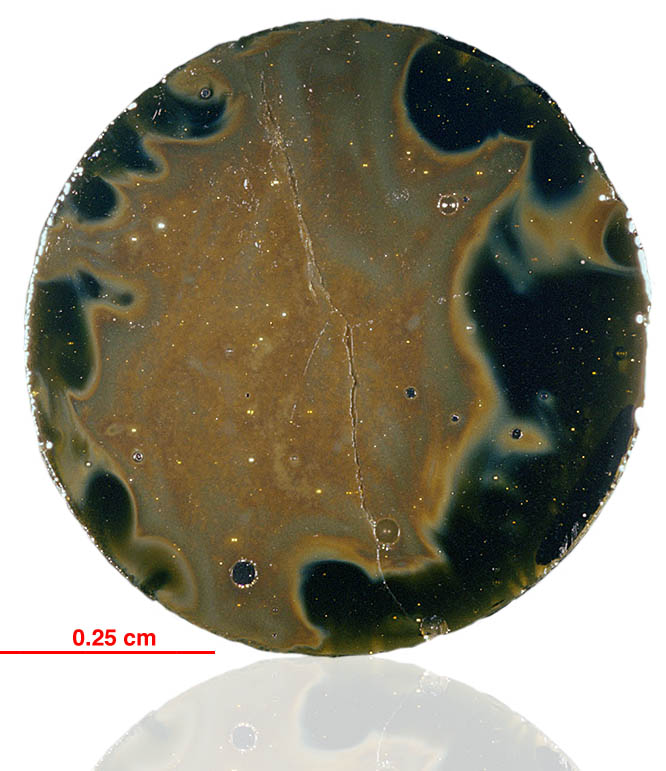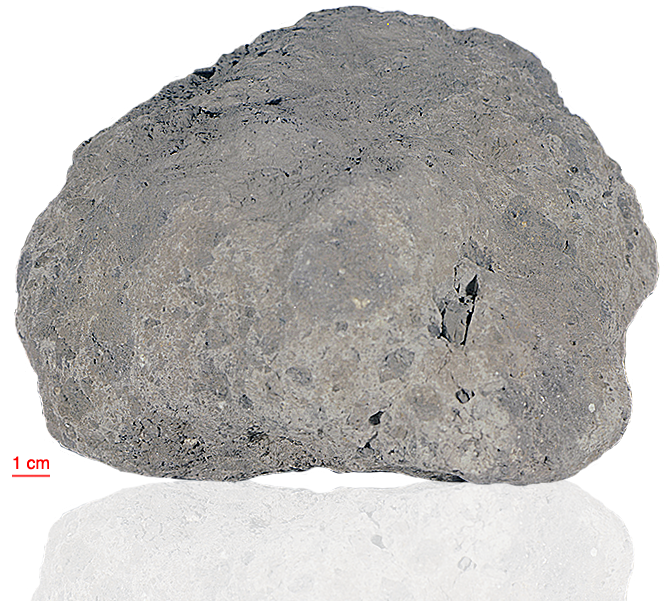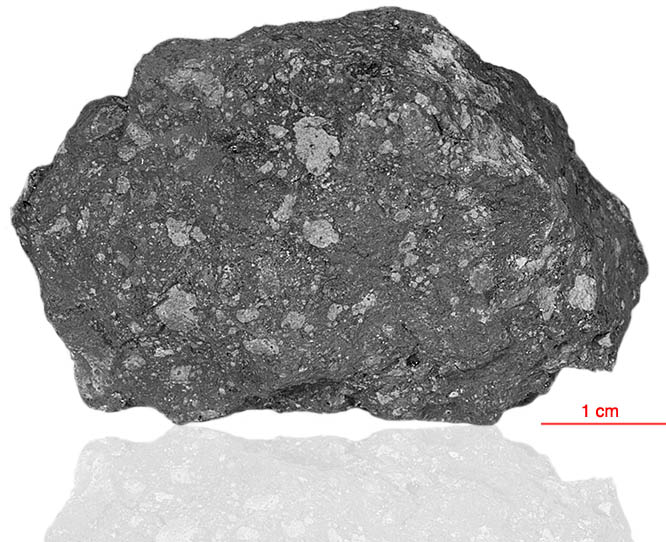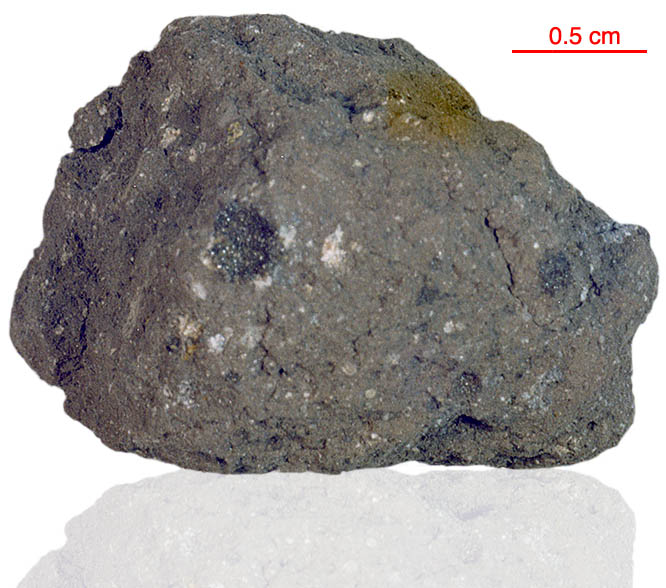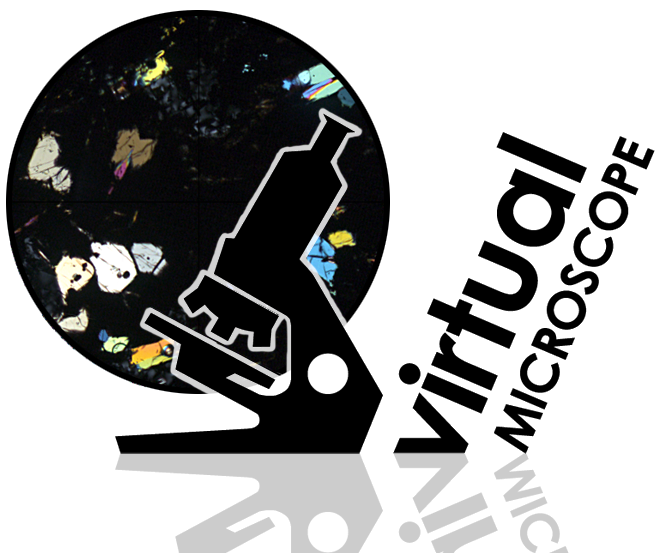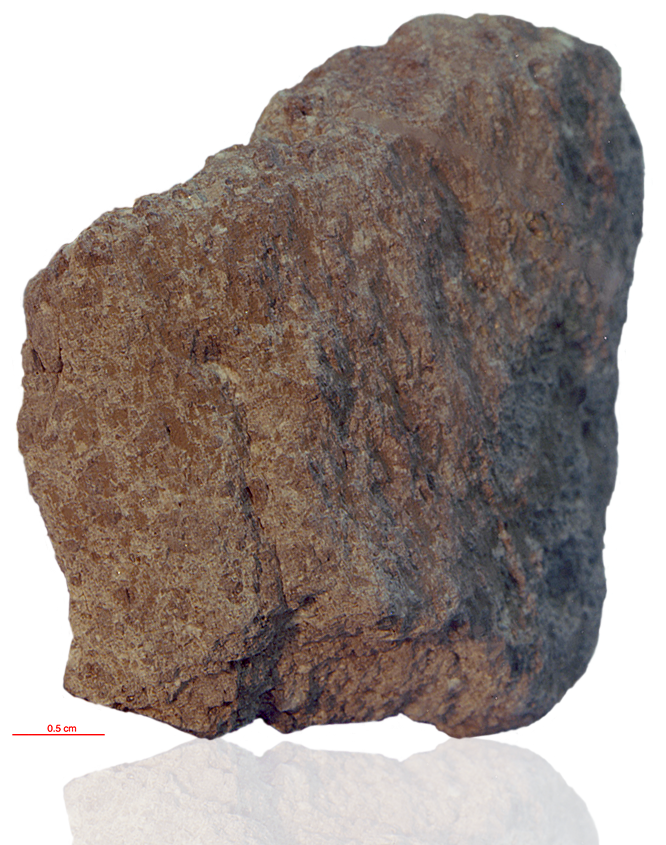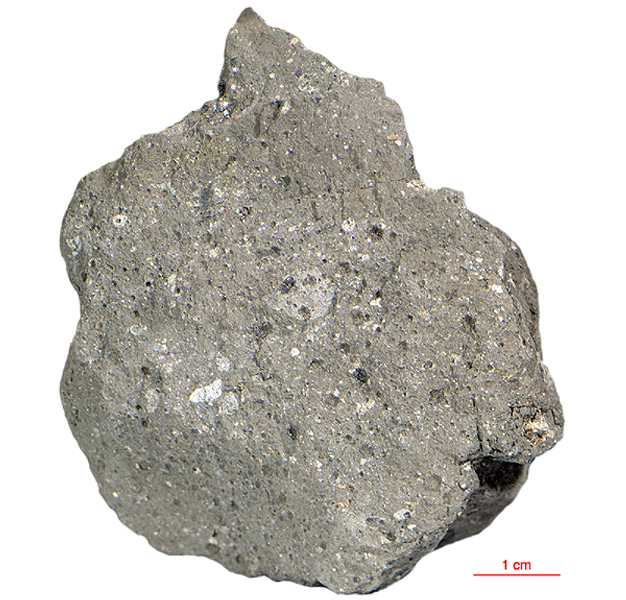
Fact sheet
14313 is a fine-grained regolith breccia with seriate grain size distribution. It has few large clasts and is mostly matrix. 14313 is a coherent polymict breccia that has had a complex history of “comminution and re-agglomeration”. The matrix is composed primarily of fine particles of brown glass. Clasts include (1) noritic rock fragments, (2) monomineralic fragments, (3) microbreccia clasts, (4) glassy fragments including chondrules and rare mare basalt clasts. There is evidence of breccia-in-breccia relations indicating multiple generations of breccia formation.
14313 weighed 144 grams before analysis. It has not been dated precisely, but is thought to be 3.7 billion years old.
Further details of this and other Apollo samples are here: http://curator.jsc.nasa.gov/lunar/
The Apollo 14 landing site was in a region formed by impact-basin debris.
Most of the 42 kilograms of rocks and soil collected on Apollo 14 are breccias (rocks that are composed of fragments of other, older rocks). In some cases, the rock fragments that form a breccia are themselves breccias. Such rocks obviously have experienced complex histories with multiple generations of impact events. Some breccias were heated enough that some of the material in the rock was melted.
Apollo 14 was launched on 31 January 1971.

